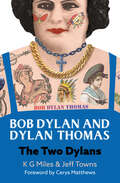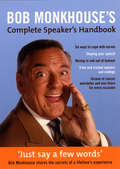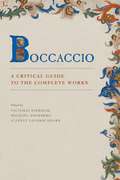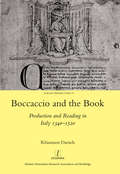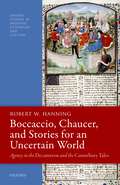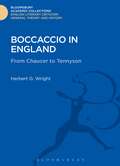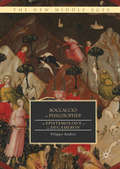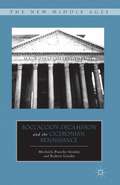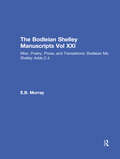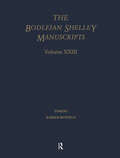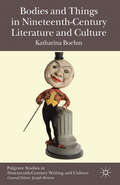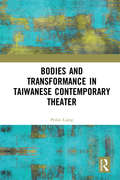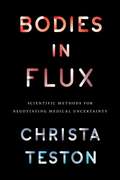- Table View
- List View
Bob Dylan and Dylan Thomas: The Two Dylans
by Jeff Towns K G MilesThere are so many strange and wonderful connections and coincidences; shared passions and associations that tie these two cultural icons – BOB DYLAN and DYLAN THOMAS together.This provides a rich tapestry – from the ancient Welsh folk tales of the Mabinogion to the poems of the Beat Generation; from Stravinsky to John Cale; from Johnny Ray to Charlie Chaplain. Rimbaud and Lorca, Sgt Pepper and The Bells of Rhymney, Nelson Algren and Tennessee Williams and much more. And the wonderful connections between authors K G Miles and Jeff Towns makes it the perfect partnership to write this book.Fifty-two years ago, author Jeff Towns opened his first bookstore in Swansea – he called it Dylans Bookshop – a youthful homage to the poet Dylan Thomas born and raised in Swansea, an author he admired. Eight years before that, in 1962, (when he had never really heard of Dylan Thomas), he had bought his first ever LP record, Bob Dylan's first ever LP release calledBob Dylanwith a track list; In My Time of Dyin', Fixin' to Die, See That My Grave is Kept Clean and so on; baker's dozen of powerful songs. Jeff read that his new hero had been born Robert Zimmerman but had changed his name to BOB DYLAN, a homage to a Welsh poet named DYLAN THOMAS.From that moment on THE TWO DYLANS became a constant part of and backdrop to his life. And the two Dylans kept on giving – they were both on the cover of the Beatles Sgt Pepper album. Peter Blake who fashioned the cover of Pepper, was a huge fan on Dylan Thomas' radio play Under Milk Wood. Jeff went to see Peter, they became friends and still are. Peter gave permission to use his wonderfulTiny Tina the Tattooed Lady©Peter Blake image for the cover of this book.London co-author K G Miles has been inspired by BOB DYLAN since being an awestruck child at Bob's Isle of Wight Festival in 1969. He is now the co-curator the of theDylan Room at London's Troubadour Cluband was honoured to address the inaugural conference at the Tulsa Archive in 2019.
Bob Monkhouse's Complete Speaker's Handbook
by Bob MonkhouseDiscover Bob Monkhouse's secrets accumulated from a lifetime's experience in scriptwriting and speechmaking. With his own golden rules, advice and examples from fellow experts and famous friends, and a wealth of humorous material that worked for him, this light-hearted yet thoroughly practical handbook ensures that you will always be ready to say a few words.
Boccaccio: A Critical Guide to the Complete Works
by Victoria Kirkham Michael Sherberg Janet Levarie SmarrLong celebrated as one of “the Three Crowns” of Florence, Giovanni Boccaccio (1313–75) experimented widely with the forms of literature. His prolific and innovative writings—which range beyond the novella, from lyric to epic, from biography to mythography and geography, from pastoral and romance to invective—became powerful models for authors in Italy and across the Continent. This collection of essays presents Boccaccio’s life and creative output in its encyclopedic diversity. Exploring a variety of genres, Latin as well as Italian, it provides short descriptions of all his works, situates them in his oeuvre, and features critical expositions of their most salient features and innovations. Designed for readers at all levels, it will appeal to scholars of literature, medieval and Renaissance studies, humanism and the classical tradition; as well as European historians, art historians, and students of material culture and the history of the book. Anchored by an introduction and chronology, this volume contains contributions by prominent Boccaccio scholars in the United States, as well as essays by contributors from France, Italy, and the United Kingdom. The year 2013, Boccaccio’s seven-hundredth birthday, will be an important one for the study of his work and will see an increase in academic interest in reassessing his legacy.
Boccaccio: A Critical Guide to the Complete Works
by Victoria Kirkham Michael Sherberg Janet Levarie SmarrLong celebrated as one of “the Three Crowns” of Florence, Giovanni Boccaccio (1313–75) experimented widely with the forms of literature. His prolific and innovative writings—which range beyond the novella, from lyric to epic, from biography to mythography and geography, from pastoral and romance to invective—became powerful models for authors in Italy and across the Continent. This collection of essays presents Boccaccio’s life and creative output in its encyclopedic diversity. Exploring a variety of genres, Latin as well as Italian, it provides short descriptions of all his works, situates them in his oeuvre, and features critical expositions of their most salient features and innovations. Designed for readers at all levels, it will appeal to scholars of literature, medieval and Renaissance studies, humanism and the classical tradition; as well as European historians, art historians, and students of material culture and the history of the book. Anchored by an introduction and chronology, this volume contains contributions by prominent Boccaccio scholars in the United States, as well as essays by contributors from France, Italy, and the United Kingdom. The year 2013, Boccaccio’s seven-hundredth birthday, will be an important one for the study of his work and will see an increase in academic interest in reassessing his legacy.
Boccaccio: A Critical Guide to the Complete Works
by Victoria Kirkham, Michael Sherberg, and Janet Levarie SmarrLong celebrated as one of “the Three Crowns” of Florence, Giovanni Boccaccio (1313–75) experimented widely with the forms of literature. His prolific and innovative writings—which range beyond the novella, from lyric to epic, from biography to mythography and geography, from pastoral and romance to invective—became powerful models for authors in Italy and across the Continent. This collection of essays presents Boccaccio’s life and creative output in its encyclopedic diversity. Exploring a variety of genres, Latin as well as Italian, it provides short descriptions of all his works, situates them in his oeuvre, and features critical expositions of their most salient features and innovations. Designed for readers at all levels, it will appeal to scholars of literature, medieval and Renaissance studies, humanism and the classical tradition; as well as European historians, art historians, and students of material culture and the history of the book. Anchored by an introduction and chronology, this volume contains contributions by prominent Boccaccio scholars in the United States, as well as essays by contributors from France, Italy, and the United Kingdom. The year 2013, Boccaccio’s seven-hundredth birthday, will be an important one for the study of his work and will see an increase in academic interest in reassessing his legacy.
Boccaccio: A Critical Guide to the Complete Works
by Victoria Kirkham, Michael Sherberg, and Janet Levarie SmarrLong celebrated as one of “the Three Crowns” of Florence, Giovanni Boccaccio (1313–75) experimented widely with the forms of literature. His prolific and innovative writings—which range beyond the novella, from lyric to epic, from biography to mythography and geography, from pastoral and romance to invective—became powerful models for authors in Italy and across the Continent. This collection of essays presents Boccaccio’s life and creative output in its encyclopedic diversity. Exploring a variety of genres, Latin as well as Italian, it provides short descriptions of all his works, situates them in his oeuvre, and features critical expositions of their most salient features and innovations. Designed for readers at all levels, it will appeal to scholars of literature, medieval and Renaissance studies, humanism and the classical tradition; as well as European historians, art historians, and students of material culture and the history of the book. Anchored by an introduction and chronology, this volume contains contributions by prominent Boccaccio scholars in the United States, as well as essays by contributors from France, Italy, and the United Kingdom. The year 2013, Boccaccio’s seven-hundredth birthday, will be an important one for the study of his work and will see an increase in academic interest in reassessing his legacy.
Boccaccio and the Book: Production and Reading in Italy 1340-1520
by Rhiannon DanielsAs a new digital era increasingly impacts on the 'age of print', we are ever more conscious of the way in which information is packaged and received. The influence of the material form on the reading process was no less important during the gradual shift from manuscript to early print culture. Focusing on the physical structure and presentation of manuscripts and printed books containing texts by one of the most influential authors of the medieval period, Rhiannon Daniels traces the evolving social, cultural, and economic profile of Boccaccio's readership and the scribes and printers who laboured to reproduce three of his works: the Teseida , Decameron , and De mulieribus claris . Rhiannon Daniels is a British Academy Postdoctoral Fellow in the Department of Italian at the University of Leeds.
Boccaccio and the Book: Production and Reading in Italy 1340-1520
by Rhiannon DanielsAs a new digital era increasingly impacts on the 'age of print', we are ever more conscious of the way in which information is packaged and received. The influence of the material form on the reading process was no less important during the gradual shift from manuscript to early print culture. Focusing on the physical structure and presentation of manuscripts and printed books containing texts by one of the most influential authors of the medieval period, Rhiannon Daniels traces the evolving social, cultural, and economic profile of Boccaccio's readership and the scribes and printers who laboured to reproduce three of his works: the Teseida , Decameron , and De mulieribus claris . Rhiannon Daniels is a British Academy Postdoctoral Fellow in the Department of Italian at the University of Leeds.
Boccaccio, Chaucer, and Stories for an Uncertain World: Agency in the Decameron and the Canterbury Tales (Oxford Studies in Medieval Literature and Culture)
by Robert W. HanningBoccaccio, Chaucer, and Stories for an Uncertain World understands the Decameron and the Canterbury Tales to communicate a radical uncertainty haunting most human endeavors, one that challenges effective knowledge of the future, the past, or the distant present; accurate perception of both complex, equivocal signifying systems, including language, and the intentions hidden rather than revealed by the words and deeds of others; and successful strategy in dealing with the chronic excesses and arbitrariness of power. This comparative study of Decameron novelle and Canterbury pilgrim tales yields the insight that the key to coping with these challenges is pragmatic prudence: rational calculation issuing in an opportunistic, often amoral choice of ingenious deeds and/or eloquent words appropriate (though without guarantee) to mastering a specific crisis, and achieving the goal of agency in the here and now, not salvation in the Hereafter. An initial chapter explores the Aristotelian antecedents, contemporaneous cultural influences, and narrative techniques that intersect to shape the radically uncertain world of the Decameron and the Canterbury Tales, while succeeding chapters pair, and compare, stories from both collections that illustrate the quest for agency-its successes and its failures—through plots often brilliantly adapted from simpler antecedents, as well as eloquence by turns satiric and insightful. This is storytelling that exposes a culture's fears, as well as its aspirations for mastery over the circumstances that challenge its existence; reading these tales should be a labor of love and the goal of this study is to help assure that the reader's labor shall not be lost.
Boccaccio, Chaucer, and Stories for an Uncertain World: Agency in the Decameron and the Canterbury Tales (Oxford Studies in Medieval Literature and Culture)
by Robert W. HanningBoccaccio, Chaucer, and Stories for an Uncertain World understands the Decameron and the Canterbury Tales to communicate a radical uncertainty haunting most human endeavors, one that challenges effective knowledge of the future, the past, or the distant present; accurate perception of both complex, equivocal signifying systems, including language, and the intentions hidden rather than revealed by the words and deeds of others; and successful strategy in dealing with the chronic excesses and arbitrariness of power. This comparative study of Decameron novelle and Canterbury pilgrim tales yields the insight that the key to coping with these challenges is pragmatic prudence: rational calculation issuing in an opportunistic, often amoral choice of ingenious deeds and/or eloquent words appropriate (though without guarantee) to mastering a specific crisis, and achieving the goal of agency in the here and now, not salvation in the Hereafter. An initial chapter explores the Aristotelian antecedents, contemporaneous cultural influences, and narrative techniques that intersect to shape the radically uncertain world of the Decameron and the Canterbury Tales, while succeeding chapters pair, and compare, stories from both collections that illustrate the quest for agency-its successes and its failures—through plots often brilliantly adapted from simpler antecedents, as well as eloquence by turns satiric and insightful. This is storytelling that exposes a culture's fears, as well as its aspirations for mastery over the circumstances that challenge its existence; reading these tales should be a labor of love and the goal of this study is to help assure that the reader's labor shall not be lost.
Boccaccio in England: From Chaucer to Tennyson (Bloomsbury Academic Collections: English Literary Criticism)
by Herbert G. WrightProfessor Wright's objective is to see Boccaccio in relation to the personality of the writers to whom he appealed and simultaneously to observe the changing taste of successive ages as it was revealed by their choice among Bocccaccio's writings. Boccaccio was also a Eurpoean literary phenomenon, and this study attempts to consider his fortunes on the Continent. In considering Chaucer's relation to Boccaccio, the author examines Chaucer's poems afresh, studying the Italian originals closely in order to ascertain the precise nature of the English adaptation or transformation. Various minor figures of English literature are also dealt with at some length due to the importance of Boccaccio's influence on their work.
Boccaccio the Philosopher: An Epistemology of the Decameron
by Filippo AndreiThis book explores the tangled relationship between literary production and epistemological foundation as exemplified in one of the masterpieces of Italian literature. Filippo Andrei argues that Giovanni Boccaccio's Decameron has a significant though concealed engagement with philosophy, and that the philosophical implications of its narratives can be understood through an epistemological approach to the text. He analyzes the influence of Dante, Petrarch, Thomas Aquinas, Aristotle, and other classical and medieval thinkers on Boccaccio's attitudes towards ethics and knowledge-seeking. Beyond providing an epistemological reading of the Decameron, this book also evaluates how a theoretical reflection on the nature of rhetoric and poetic imagination can ultimately elicit a theory of knowledge.
Boccaccio the Philosopher: An Epistemology of the Decameron
by Filippo AndreiThis book explores the tangled relationship between literary production and epistemological foundation as exemplified in one of the masterpieces of Italian literature. Filippo Andrei argues that Giovanni Boccaccio's Decameron has a significant though concealed engagement with philosophy, and that the philosophical implications of its narratives can be understood through an epistemological approach to the text. He analyzes the influence of Dante, Petrarch, Thomas Aquinas, Aristotle, and other classical and medieval thinkers on Boccaccio's attitudes towards ethics and knowledge-seeking. Beyond providing an epistemological reading of the Decameron, this book also evaluates how a theoretical reflection on the nature of rhetoric and poetic imagination can ultimately elicit a theory of knowledge.
Boccaccio’s Decameron and the Ciceronian Renaissance (The New Middle Ages)
by M. GrudinBoccaccio's Decameron and the Ciceronian Renaissance demonstrates that Boccaccio's puzzling masterpiece takes on organic consistency when viewed as an early modern adaptation of a pre-Christian, humanistic vision.
Bod XXI: Misc. Poetry, Prose, and Translations: Bodleian Ms.Shelley Adds.C.4
by Percy Bysshe ShelleyFirst published in 1996. This is noted as Volume XXI of the Bodleian Shelley Manuscripts and includes copies of 'Misery- a fragment', 'Ode to Naples', 'Una Favola' and drafts of ‘The Coliseum’, ‘On Vegetarianism’, along with translation of ‘Goethe’s Faust’ and more. This volume also includes scholarly opinion from a knowledgable students of Shelley’s manuscripts, Professor E.B. Murray, the editor of the magnificent first volume of the Clarendon Press edition of The Prose Works of Percy Bysshe Shelley (1993),as well as Volume IV in The Bodleian Shelley Manuscripts.
Bod XXIII: Indexes to the Bodleian Shelley Manuscripts with Addenda, Corrigenda, List of Watermarks, and Related Bodleian
by Don Reiman Bruce Barker-Benfield Tatsuo TokooGarland's magnificent facsimile series of the manuscripts of Percy Bysshe Shelley and Mary Wollstonecraft Shelley in the Bodleian Library, Oxford ( The Bodleian Shelley Manuscripts , 22 volumes, 1986-1997) is now made complete by the publication of its Index-volume. Volume XXIII provides the key to the contents of the Shelleyan notebooks and papers in all their complexity: poems, prose, translations, fragments, calculations, drawing and doodles, addresses and other miscellaneous jottings. The accumulated findings provide a treasure-trove of information about the Shelley's lives: their writings and readings, and echoes of classical and later authors; the people they met, corresponded with, rented houses from, or saw perform; the towns they visited, the very houses in which they lived, the lakes and rivers they sailed and the mountains they climbed. The intellectual and physical data of these manuscripts will help open new vistas for students of their lives, thought and creative writing.
Bod XXIII: Indexes to the Bodleian Shelley Manuscripts with Addenda, Corrigenda, List of Watermarks, and Related Bodleian
by Tatsuo TokooGarland's magnificent facsimile series of the manuscripts of Percy Bysshe Shelley and Mary Wollstonecraft Shelley in the Bodleian Library, Oxford ( The Bodleian Shelley Manuscripts , 22 volumes, 1986-1997) is now made complete by the publication of its Index-volume. Volume XXIII provides the key to the contents of the Shelleyan notebooks and papers in all their complexity: poems, prose, translations, fragments, calculations, drawing and doodles, addresses and other miscellaneous jottings. The accumulated findings provide a treasure-trove of information about the Shelley's lives: their writings and readings, and echoes of classical and later authors; the people they met, corresponded with, rented houses from, or saw perform; the towns they visited, the very houses in which they lived, the lakes and rivers they sailed and the mountains they climbed. The intellectual and physical data of these manuscripts will help open new vistas for students of their lives, thought and creative writing.
Bodies and Things in Nineteenth-Century Literature and Culture (Palgrave Studies in Nineteenth-Century Writing and Culture)
by Katharina BoehmThis book provides fresh perspectives on the object world, embodied experience and materiality in nineteenth-century literature and culture. Contributors explore canonical works by Austen, Brontë, Dickens and James, alongside less-familiar texts and a range of objects including nineteenth-century automata, scrapbooks, museum exhibits and antiques.
Bodies and Transformance in Taiwanese Contemporary Theater
by Peilin LiangIn Bodies and Transformance in Taiwanese Contemporary Theater, Peilin Liang develops a theory of bodily transformation. Proposing the concept of transformance, a conscious and rigorous process of self-cultivation toward a reconceptualized body, Liang shows how theater practitioners of minoritized cultures adopt transformance as a strategy to counteract the embodied practices of ideological and economic hegemony. This book observes key Taiwanese contemporary theater practitioners at work in forging five reconceptualized bodies: the energized, the rhythmic, the ritualized, the joyous, and the (re)productive. By focusing on the development of transformance between the years of 2000–2008, a tumultuous political watershed in Taiwan’s history, the author succeeds in bridging postcolonialism and interculturalism in her conceptual framework. Ideal for scholars of Asian and postcolonial theater, Bodies and Transformance in Taiwanese Contemporary Theater shows how transformance, rather than performance, calibrates with far greater precision and acuity the state of the body and the culture that it seeks to create.
Bodies and Transformance in Taiwanese Contemporary Theater
by Peilin LiangIn Bodies and Transformance in Taiwanese Contemporary Theater, Peilin Liang develops a theory of bodily transformation. Proposing the concept of transformance, a conscious and rigorous process of self-cultivation toward a reconceptualized body, Liang shows how theater practitioners of minoritized cultures adopt transformance as a strategy to counteract the embodied practices of ideological and economic hegemony. This book observes key Taiwanese contemporary theater practitioners at work in forging five reconceptualized bodies: the energized, the rhythmic, the ritualized, the joyous, and the (re)productive. By focusing on the development of transformance between the years of 2000–2008, a tumultuous political watershed in Taiwan’s history, the author succeeds in bridging postcolonialism and interculturalism in her conceptual framework. Ideal for scholars of Asian and postcolonial theater, Bodies and Transformance in Taiwanese Contemporary Theater shows how transformance, rather than performance, calibrates with far greater precision and acuity the state of the body and the culture that it seeks to create.
Bodies in Flux: Scientific Methods for Negotiating Medical Uncertainty
by Christa TestonDoctors, scientists, and patients have long grappled with the dubious nature of “certainty” in medical practice. To help navigate the chaos caused by ongoing bodily change we rely on scientific reductions and deductions. We take what we know now and make best guesses about what will be. But bodies in flux always outpace the human gaze. Particularly in cancer care, processes deep within our bodies are at work long before we even know where to look. In the face of constant biological and technological change, how do medical professionals ultimately make decisions about care? Bodies in Flux explores the inventive ways humans and nonhumans work together to manufacture medical evidence. Each chapter draws on rhetorical theory to investigate a specific scientific method for negotiating medical uncertainty in cancer care, including evidential visualization, assessment, synthesis, and computation. Case studies unveil how doctors rely on visuals when deliberating about a patient’s treatment options, how members of the FDA use inferential statistics to predict a drug’s effectiveness, how researchers synthesize hundreds of clinical trials into a single evidence-based recommendation, and how genetic testing companies compute and commoditize human health. Teston concludes by advocating for an ethic of care that pushes back against the fetishization of certainty—an ethic of care that honors human fragility and bodily flux.
Bodies in Flux: Scientific Methods for Negotiating Medical Uncertainty
by Christa TestonDoctors, scientists, and patients have long grappled with the dubious nature of “certainty” in medical practice. To help navigate the chaos caused by ongoing bodily change we rely on scientific reductions and deductions. We take what we know now and make best guesses about what will be. But bodies in flux always outpace the human gaze. Particularly in cancer care, processes deep within our bodies are at work long before we even know where to look. In the face of constant biological and technological change, how do medical professionals ultimately make decisions about care? Bodies in Flux explores the inventive ways humans and nonhumans work together to manufacture medical evidence. Each chapter draws on rhetorical theory to investigate a specific scientific method for negotiating medical uncertainty in cancer care, including evidential visualization, assessment, synthesis, and computation. Case studies unveil how doctors rely on visuals when deliberating about a patient’s treatment options, how members of the FDA use inferential statistics to predict a drug’s effectiveness, how researchers synthesize hundreds of clinical trials into a single evidence-based recommendation, and how genetic testing companies compute and commoditize human health. Teston concludes by advocating for an ethic of care that pushes back against the fetishization of certainty—an ethic of care that honors human fragility and bodily flux.
Bodies in Flux: Scientific Methods for Negotiating Medical Uncertainty
by Christa TestonDoctors, scientists, and patients have long grappled with the dubious nature of “certainty” in medical practice. To help navigate the chaos caused by ongoing bodily change we rely on scientific reductions and deductions. We take what we know now and make best guesses about what will be. But bodies in flux always outpace the human gaze. Particularly in cancer care, processes deep within our bodies are at work long before we even know where to look. In the face of constant biological and technological change, how do medical professionals ultimately make decisions about care? Bodies in Flux explores the inventive ways humans and nonhumans work together to manufacture medical evidence. Each chapter draws on rhetorical theory to investigate a specific scientific method for negotiating medical uncertainty in cancer care, including evidential visualization, assessment, synthesis, and computation. Case studies unveil how doctors rely on visuals when deliberating about a patient’s treatment options, how members of the FDA use inferential statistics to predict a drug’s effectiveness, how researchers synthesize hundreds of clinical trials into a single evidence-based recommendation, and how genetic testing companies compute and commoditize human health. Teston concludes by advocating for an ethic of care that pushes back against the fetishization of certainty—an ethic of care that honors human fragility and bodily flux.
Bodies in Flux: Scientific Methods for Negotiating Medical Uncertainty
by Christa TestonDoctors, scientists, and patients have long grappled with the dubious nature of “certainty” in medical practice. To help navigate the chaos caused by ongoing bodily change we rely on scientific reductions and deductions. We take what we know now and make best guesses about what will be. But bodies in flux always outpace the human gaze. Particularly in cancer care, processes deep within our bodies are at work long before we even know where to look. In the face of constant biological and technological change, how do medical professionals ultimately make decisions about care? Bodies in Flux explores the inventive ways humans and nonhumans work together to manufacture medical evidence. Each chapter draws on rhetorical theory to investigate a specific scientific method for negotiating medical uncertainty in cancer care, including evidential visualization, assessment, synthesis, and computation. Case studies unveil how doctors rely on visuals when deliberating about a patient’s treatment options, how members of the FDA use inferential statistics to predict a drug’s effectiveness, how researchers synthesize hundreds of clinical trials into a single evidence-based recommendation, and how genetic testing companies compute and commoditize human health. Teston concludes by advocating for an ethic of care that pushes back against the fetishization of certainty—an ethic of care that honors human fragility and bodily flux.
Bodies in Flux: Scientific Methods for Negotiating Medical Uncertainty
by Christa TestonDoctors, scientists, and patients have long grappled with the dubious nature of “certainty” in medical practice. To help navigate the chaos caused by ongoing bodily change we rely on scientific reductions and deductions. We take what we know now and make best guesses about what will be. But bodies in flux always outpace the human gaze. Particularly in cancer care, processes deep within our bodies are at work long before we even know where to look. In the face of constant biological and technological change, how do medical professionals ultimately make decisions about care? Bodies in Flux explores the inventive ways humans and nonhumans work together to manufacture medical evidence. Each chapter draws on rhetorical theory to investigate a specific scientific method for negotiating medical uncertainty in cancer care, including evidential visualization, assessment, synthesis, and computation. Case studies unveil how doctors rely on visuals when deliberating about a patient’s treatment options, how members of the FDA use inferential statistics to predict a drug’s effectiveness, how researchers synthesize hundreds of clinical trials into a single evidence-based recommendation, and how genetic testing companies compute and commoditize human health. Teston concludes by advocating for an ethic of care that pushes back against the fetishization of certainty—an ethic of care that honors human fragility and bodily flux.
